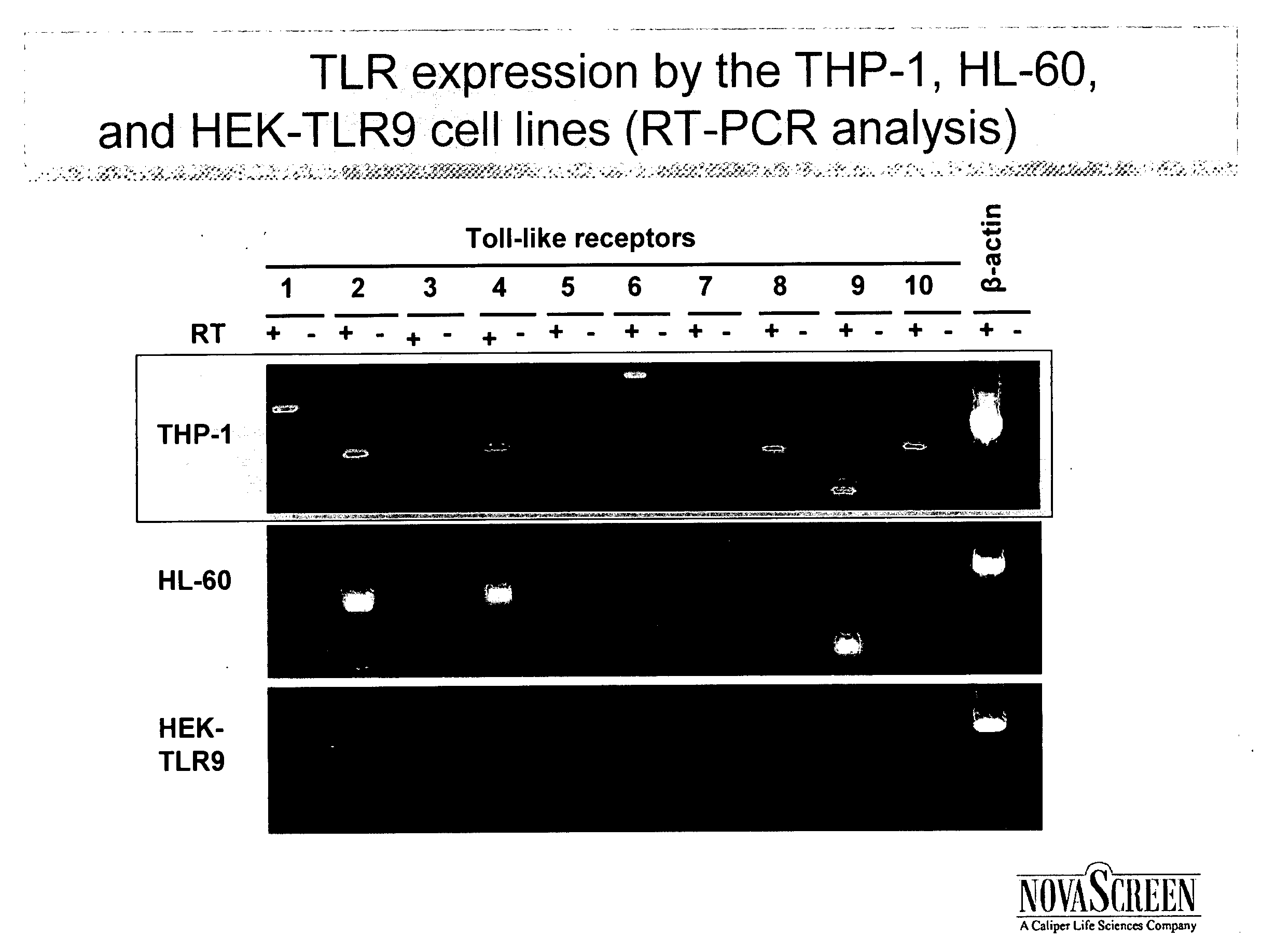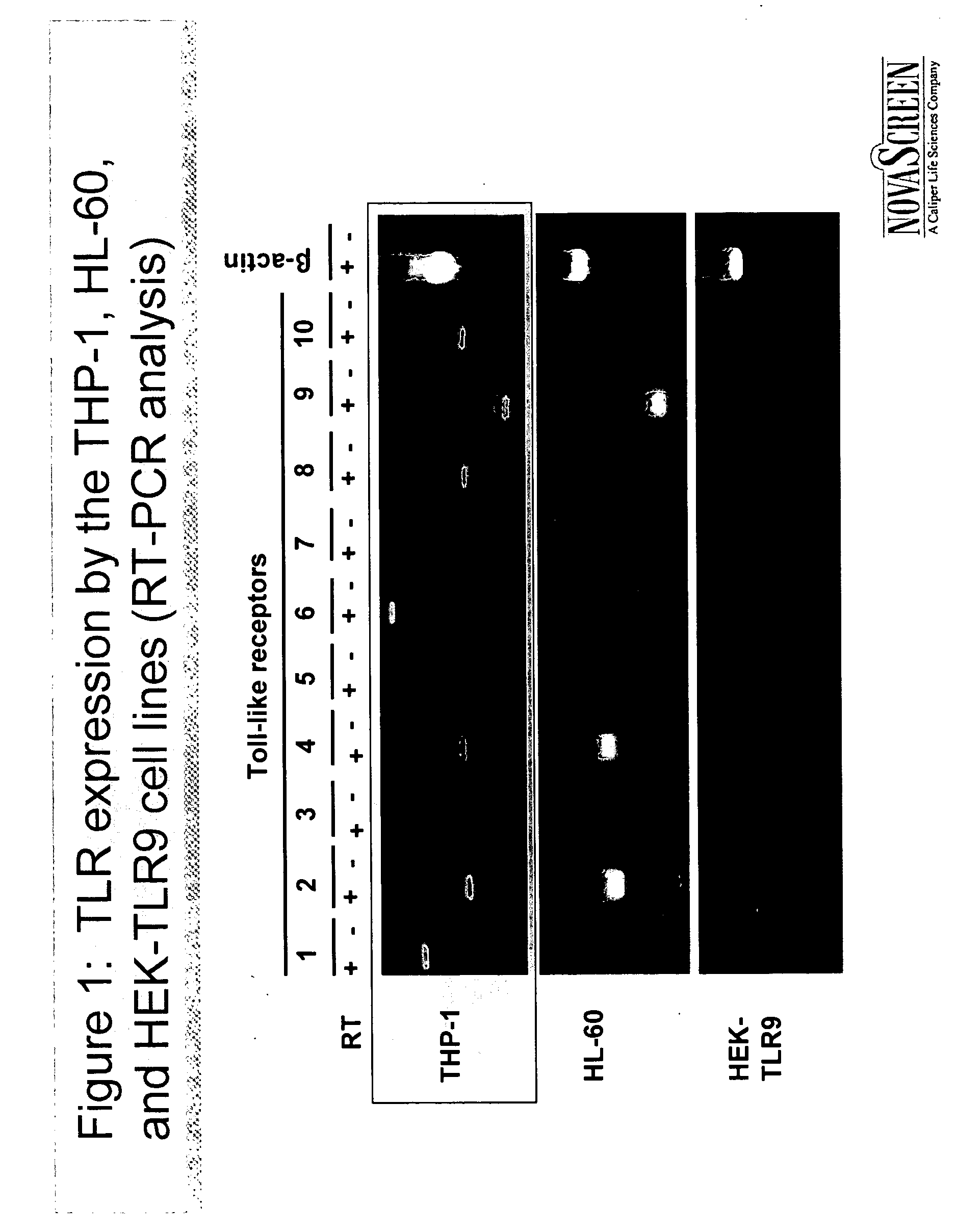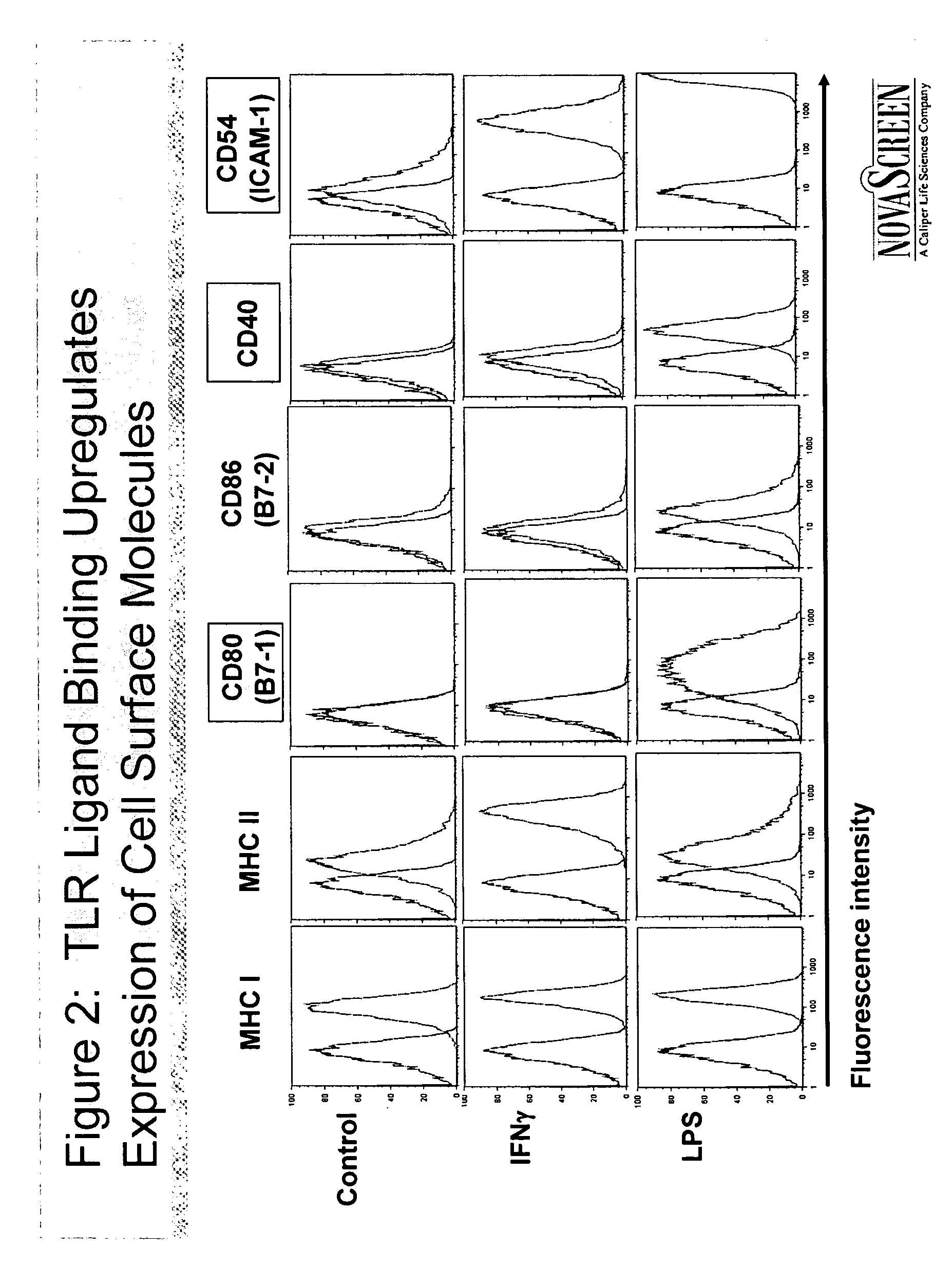Methods of screening for immuno-adjuvants and vaccines comprising anti-microtubule immuno-adjuvants
- Summary
- Abstract
- Description
- Claims
- Application Information
AI Technical Summary
Benefits of technology
Problems solved by technology
Method used
Image
Examples
example 1
A High Throughput Screening Method for Identifying Agents that Stimulate the Innate Immune System
[0059] This example shows a high throughput screening method useful for identifying agents that stimulate the innate immune system.
Materials and Methods
Cell Culture
[0060] Human monocytic cell lines THP-1 (TIB-202; ATCC) were grown in RPMI-1640 media (Cambrex) supplemented with 10% FCS (HyClone), 2 mM L-glutamine (Sigma-Aldrich), 50 μM 2-mercaptoethanol (Sigma-Aldrich), and sodium pyruvate (Invitrogen).
Test Compounds Preparation and Storage
[0061] Test compounds / candidate agents were diluted in 100% DMSO at a concentration of 10−2M and stored in 96 well “matrix” plates at −80° C. These compound stocks were employed as a pool of mother plates. Compounds to be assayed were diluted 100 times in sterile PBS using a liquid handling robot “Evolution P3” (PerkinElmer) to a concentration of 10−4M, and stored at −20° C. until they were used for the assay. In total, 20,000 candidate agents ...
example 2
Determination of Toll-Like Receptor Expression on Cells
[0069] This example shows that RT-PCR can be used to determine whether a cell expresses a TLR.
[0070] PCR primers for specific for TLR-1, TLR-2, TLR-3, TLR-4, TLR-5, TLR-6, TLR-7, TLR-8, TLR-9, and TLR-10 were designed using known nucleic acid sequences encoding those receptors. The primers were used according to standard RT-PCR protocols to amplify mRNA transcripts in three cell lines: THP-1, HL-60, and HEK-TLR9. β-actin was used as a positive control in the RT-PCR. Electrophoresis was performed on all RT-PCR products.
[0071] Results are shown in FIG. 1. THP-1 was shown to express significant quantities of TLR-1, TLR-2, TLR-4, TLR-6, TLR-7, TLR-8, TLR-9 and TLR-10. HL-60 was shown to express significant quantities of TLR-2, TLR-4, TLR-6, TLR-7, and TLR-9. HEK-TLR9 was shown to express significant quantities of TLR-9 only.
example 3
Demonstration that Ligand Binding to TLRs on THP-1 Cells Upregulates Expression of Cell Surface Molecules Involved in Innate Immunity
[0072] This example shows that ligand binding to TLRs on THP-1 cells upregulates the expression of cell surface molecules involved in innate immunity.
[0073] THP-1 cells were incubated with IFN-γ, LPS or a control. Flow cytometry analysis was used to determine how binding of IFN-γ and LPS to TLRs affected the expression of cell surface molecules involved in innate immunity.
[0074] Results are shown in FIG. 2. Ligand binding upregulated the surface expression of MHC class I, MHC class II, CD80 (B7-1), CD40, and CD54 (ICAM-1). Ligand binding did not significantly affect the surface expression of CD86 (B7-2).
PUM
 Login to View More
Login to View More Abstract
Description
Claims
Application Information
 Login to View More
Login to View More - R&D
- Intellectual Property
- Life Sciences
- Materials
- Tech Scout
- Unparalleled Data Quality
- Higher Quality Content
- 60% Fewer Hallucinations
Browse by: Latest US Patents, China's latest patents, Technical Efficacy Thesaurus, Application Domain, Technology Topic, Popular Technical Reports.
© 2025 PatSnap. All rights reserved.Legal|Privacy policy|Modern Slavery Act Transparency Statement|Sitemap|About US| Contact US: help@patsnap.com



